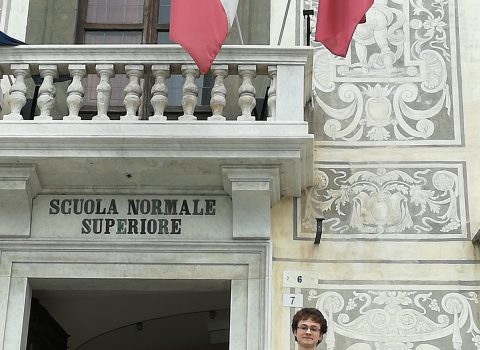
How to Shield us From Fake News, According to Paolo Attivissimo
The journalist specializing in ICT and well-known fake news "huntsman" has unveiled to an audience of young students the tricks to spot online fake news
“Fake news hunting used to be a fun and light job. Now it has become dreadfully serious: you had better not be reporters.” Paolo Attivissimo‘s words at a lecture-show at the Sambàpolis Theater in Trento on August 22, organized by the universities of Trento and Bolzano as part of the orientation week event for high school students sounded like a real warning.
Attivissimo, a journalist specializing in ICT, has long established himself as one of the Italian gurus in debunking, the art of spotting fake news, especially thanks to his blog, Il Disinformatico. On this occasion, he had to face an audience composed largely by students from schools throughout Italy: a great opportunity to try to “educate” young people on how to recognize the thousands of taletell signs, in online information, of bogus news, urban legends, fake news, journalist topics, and more.
The result was a nice evening, in which Attivissimo took the audience on a a never boring journey, full of concrete examples, often presented with a smile but never losing sight of a very serious context, that of the fragility of modern information.
A fragility that nobody escapes, starting with journalists. In Attivissimo’s sights, there is above all the widespread practice of “copy and paste” journalism: if a press agency is in a hurry or is incompetent, it will spread the incorrect news. In most cases the error will spread to all major news agencies, which do not bother to check the truthfulness of the piece of news. Creating significant damage, “because we readers make a sort of social pact with journalists, which leads us to believe that the news that is being published is true.”
Another chapter concerns professional fake-news writers, who spread bogus news purposely, in order to make money, thanks to the penny-per- click ads. Often leveraging on prejudices and public sentiments.
But the responsibility for the increasingly uncontrolled spread of fake news, according to Attivissimo, is also the users’. “In the past, readers were only passive consumers of information, but today it is no longer so. Thanks to social networks, everyone is a potential “news producer”: the social profiles of each of us are real newspapers, which can also have a very large diffusion if the number of followers is high. ” Sharing fake news on one’s own social profile can therefore have far more significant consequences than one can believe.
Buying it, unfortunately, is easy. Especially thanks to mental mechanisms such as “confirmation bias”, by which we select and share only news that confirm our own bias, discounting those we oppose without doing the necessary fact-checking.
However, according to Attivissimo, we do not need to have any special tools to shield ourselves. “Most news can be fact-checked in five minutes, we just need to pay a little bit of attention. And having a good knowledge of ITC helps. ”
Another story, however, is to “survive” the confrontation with the indomitable fake news writers. A very popular topic, as one can tell from the many questions on the made by the audience and by the kids at the end of the conference. “Unfortunately there is no recipe for converting fake news writers. My advice is to always avoid the eyeball to eyeball attitude, keeping a conciliatory tone and trying show the interlocutor their contradictions. ”
In short, “Get to work and never lower the guard,” Attivissimo concluded turning to the younger audience, pointing out that a good education on the issue, starting from schools, could play a key role in reducing the spread of fake news.
